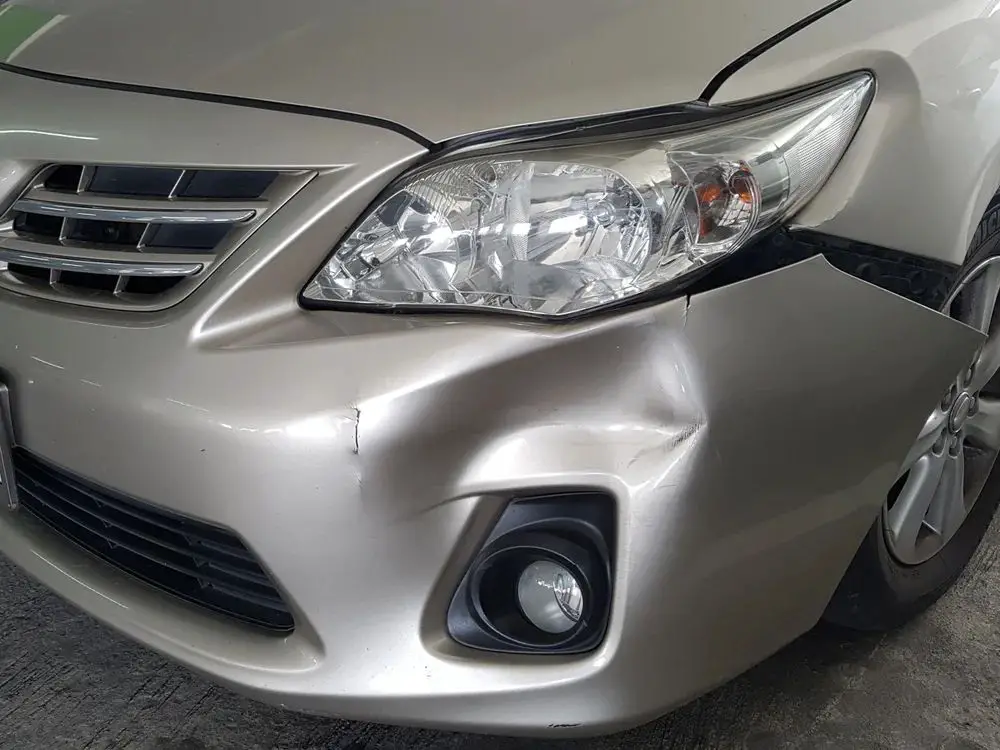Plastic bumpers are common on many vehicles today. They offer protection in minor collisions while being lightweight and affordable to replace. However, plastic bumpers can still dent, which detracts from the vehicle’s appearance. Many car owners wonder if it’s possible to remove dents from plastic bumpers or if replacement is the only option.
Page Contents
What causes dents in plastic bumpers?
There are a few common causes of dents in plastic bumpers:
- Minor collisions with other vehicles, objects, or road hazards like curbs.
- Things falling and hitting the bumper – like shopping carts in a parking lot.
- Extreme hot or cold temperatures causing the plastic to expand or contract.
- Improper jacking during a tire change or other maintenance.
The material used in plastic bumpers today is typically a polypropylene plastic or a type of thermoplastic elastomer. While this makes bumpers lightweight and affordable, it also means they can dent more easily than metal bumpers when impacted.
Can you remove dents from plastic bumpers?
Yes, it is often possible to remove dents from plastic bumpers without replacing the entire bumper. There are several methods that may work:
Heat
Applying heat can help to pop out minor dents in plastic bumpers. This works because the plastic becomes more pliable when heated. Methods to try include:
- Using a hair dryer or heat gun on the dented area.
- Holding a hot water soaked rag over the dent.
- Letting the vehicle sit in the hot sun to warm the plastic.
Apply heat for several minutes until the plastic softens, then try pushing out the dent from the inside. Be careful not to overheat the plastic.
Suction
A suction cup dent puller tool can help pull some dents out of plastic. Lightly wet the suction cup and attach it centered over the dent. Apply suction, then slowly pull up while wiggling the cup. The suction force should pop the dent outward.
Freeze Spray
Special aerosol freeze sprays made for dent repair can firm up the plastic enough to pull some dents. Spray the product on the dent for 1-2 minutes until frosty white. Using the included dent puller tool, start in the center of the dent and pull firmly outward in different directions.
Dry Ice
Pressing a piece of dry ice on the dent for a few minutes can freeze the plastic hard. Then working quickly while still cold, push out the dent from behind using a rounded tool protected with a rag.
Fillers
For deeper plastic bumper dents, fillers may be required. Products like plastic repair epoxy or filler primer can be applied to fill in the dent after roughing up the inside surface for adhesion. Once hardened, the filler is shaped flush with the bumper and sanded smooth before painting.
Professional removal methods
For more severe plastic bumper dents, professional paintless dent repair may be needed. Experienced PDR techs have access to:
- Special long reach dent tools to access dents from behind the bumper.
- Paintless dent removal tools like the Rscraper, QuikStik and knockdown tools.
- Stud welders to weld small metal pins to dents and pull them.
- Sanders and finishing tools to smooth repairs.
Professional PDR services range from $50 to $150 per dent, but can often repair dents without replacing the bumper or needing paintwork.
When to replace a plastic bumper
While many plastic bumper dents can be removed, severely damaged bumpers may still need replacement. Consider replacement if the bumper has:
- Multiple dents and damage.
- Cracks, tears, or holes in the plastic.
- Sections of the bumper coming detached or unclipped.
- Permanent creasing that ruins the shape despite dent removal.
- Damage that extends around corners or edges.
Replacing a plastic bumper cover often costs between $200-$700 for just the part. Add another couple hundred for paint time if needed. With extensive damage, replacement may make more sense than trying to repair numerous dents and defects.
Preventing future plastic bumper dents
A few tips to help avoid dents in plastic bumpers include:
- Park carefully away from cart corrals and busy areas.
- Add bumper protector pads or strips if parked frequently around carts.
- Avoid following other vehicles closely in stop-and-go traffic.
- Walk around the vehicle before pulling in or out of parking spaces.
- Install a rear backup camera and parking sensors.
- Use corner guards or bumper protectors that attach easily.
Plastic bumpers will never be as dent resistant as metal. But taking precautions and using care when parking can help minimize the chances of getting dents that require repair or replacement.
Conclusion
Dents are an annoying but common occurrence with plastic bumpers. But in many cases it is possible to remove or repair dents without replacing the bumper. Methods like heating, suction cups, freezing, or professional paintless dent repair can eliminate small to medium size dents.
However, severely damaged bumpers with multiple dents, cracks or detached areas may still require replacement. Always assess the extent of damage first before attempting repairs. With some care and effort though, it’s often possible to remove dents from plastic bumpers and restore a smooth factory appearance.
